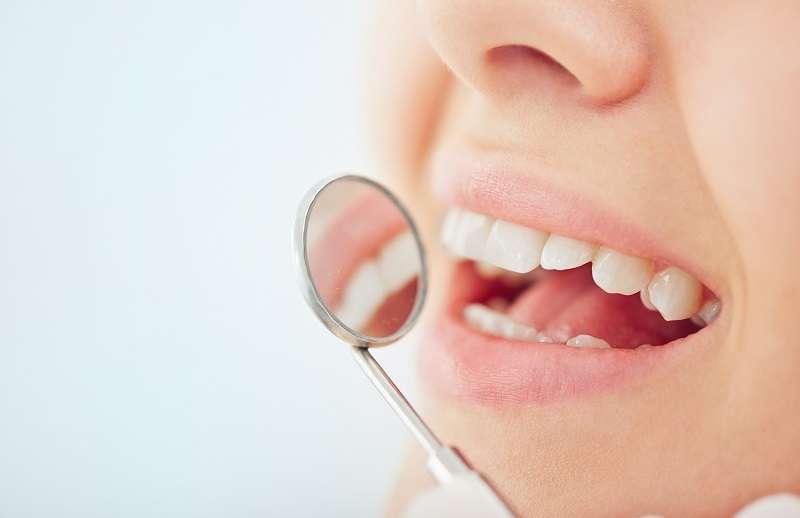What is plaque and how is it created?
Plaque is made up of food residues, bits of saliva and bacteria in the oral cavity. It is basically quite normal for plaque to build up on teeth, in the interdental spaces and on the tongue. It is just important to remove the plaque through thorough dental hygiene in order to prevent diseases such as gingivitis (inflammation of the gums), tooth decay and periodontitis.

Recognise plaque
Dental plaque can be recognised by its sticky, soft consistency and white-yellowish colour. Since it mostly settles in hard-to-reach places in the mouth, disclosing tablets or disclosing solutions have been developed, which can be used to identify the bacterial residues immediately. To do this, people chew tablets or rinse their mouth with a dye solution for about 30 seconds. The bacterial film in the form of dental plaque will then be identified through becoming discoloured. This means that you can immediately see which areas have to be cleaned more intensively or flossed more frequently.
The colouring agents are available in two versions. First of all, there is a version where all residues are coloured bluish and, then there are agents that colour the fresher plaque a different colour than the older residues. The plaque dyes are available in drug stores or pharmacies.
Removing plaque
Plaque can only be removed through well-practised oral hygiene. This means cleaning the teeth, interdental spaces and tongue daily.
An antibacterial fluoride toothpaste is a good idea so as to be able to effectively remove plaque, . The spaces between the teeth should be cleaned of food and other bacterial residues twice a day with the help of dental floss or an interdental brush. Since bacteria accumulate and multiply particularly easily on the tongue, you should also brush that daily. In addition, you can use an antibacterial mouthwash to rinse the interdental spaces.
Home remedies that help loosen plaque
First of all, one should note that plaque can only be removed through effective oral hygiene.
Tea tree oil cannot be used to loosen existing dental plaque, but it is helpful in preventing new plaque. This is because the oil is able to kill even small quantities of bacteria. All you need to do is mix one or two drops in with your toothpaste and brush your teeth thoroughly.
We do not recommend home remedies like baking soda, vinegar and lemon. These will remove the plaque, but they will also attack the tooth enamel, which cannot be restored. A far less aggressive and efficient variant is brushing with a toothbrush and using dental floss.
When plaque has to be removed by the dentist
Soft plaque does not have to be removed by a dentist. It is only when plaque becomes calcified that a doctor has to be remove it, either manually, mechanically or using ultrasound.
The difference between plaque and tartar
If plaque is not removed, it hardens and develops into tartar. Tartar is a calcified form of plaque and therefore not that easy to remove. It is possible to remove tartar yourself with a dental scaler or tartar remover, but it is very risky. Non-professional use can lead not only to injuries, but also to inflammation of the gums. Fixed tartar should therefore always be removed by a dentist. During treatment, the calcifications will be removed from the surface of the tooth and along the gums.
In order to avoid tartar, one should first and foremost ensure that plaque is thoroughly removed from the teeth and interdental spaces.
Plaque in children
Since dental plaque is something very natural, children are not spared either. Sugary foods and drinks promote the formation of plaque. Plaque on milk teeth hardens after a few days and can lead to tooth decay more quickly than on adult teeth. This is where disclosing tablets are particularly useful, as a playful way of showing children which areas need better cleaning.
Tips for prevention
The best way to avoid plaque build-up is to brush your teeth thoroughly every day. It is important to also thoroughly clean hard-to-reach areas and the interdental spaces.
You should also have your teeth checked by a dentist at least once a year and, if necessary, professionally cleaned.